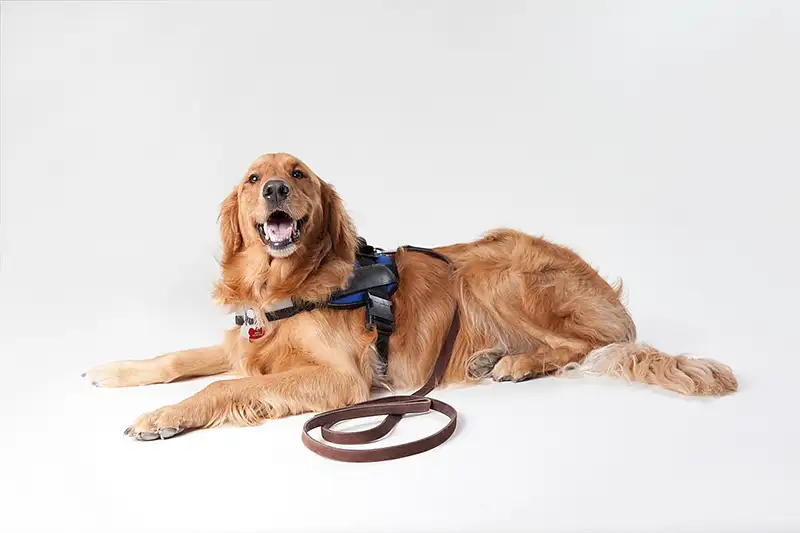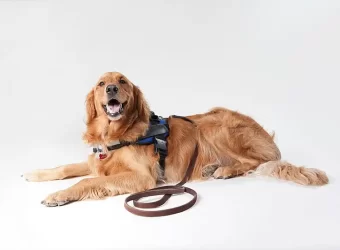Flying With a Service Animal? Here’s What You Need to Know
 Under the Air Carrier Access Act (ACAA), US airlines are required to accept service animals on all their flights. Additionally, foreign air carriers are required to accept service animals on all flights to and from the US. Psychiatric service animals are treated the same as service animals under the ACAA. Additionally, after the ACAA update in 2021, airlines are no longer required to accommodate emotional support animals. They are now treated as pets and are subject to pet rules and additional charges. So here’s what you need to know about flying with a service animal.
Under the Air Carrier Access Act (ACAA), US airlines are required to accept service animals on all their flights. Additionally, foreign air carriers are required to accept service animals on all flights to and from the US. Psychiatric service animals are treated the same as service animals under the ACAA. Additionally, after the ACAA update in 2021, airlines are no longer required to accommodate emotional support animals. They are now treated as pets and are subject to pet rules and additional charges. So here’s what you need to know about flying with a service animal.
What is a Service Animal?
Under the law, a service animal is defined as a dog that is trained to do a specific task or tasks for a person with a disability. Miniature horses are no longer accepted under the ACAA. And under no circumstances are US airlines required to accept unusual species, such as snakes, other reptiles, ferrets, rodents and spiders. Foreign carriers, that fly to and from the US are also required to accept dogs as service animals.
Service animals must be at least four months old; and air carriers are not required to accept service animals in training. There are no breed or weight restrictions; and although most passengers only travel with one service animal, two are allowed if they perform different tasks for the passenger. Additionally, airlines cannot restrict the number of service animals on any flight.
What Documentation is Required?
Airlines can require passengers flying with a service animal to submit DOT designed forms that attest to the service animal’s health, behavior and training. Additionally they can require attestation that the service animal will not need to relieve itself, or can relieve itself in a sanitary manner, on flights over eight hours. This documentation must be submitted at least 48 hours prior to departure.
Although most airlines process these DOT forms seamlessly on their own websites, a few use third-party vendors to accomplish this task. And although the same 48-hour advance notice is required, sometimes it’s difficult for third-party vendors to process the forms within this time frame. Check the airline website and allow yourself plenty of extra time if they use a third-party vendor.
Airline personnel are also allowed to seek credible verbal assurance from passengers that they have a disability and require a service animal. If the passenger’s disability is not apparent, airline personnel may question the passenger to determine their need for a service animal, even if the animal has a harness, tag or vest. And finally, if the airline refuses to accept an animal as a service animal, they must explain the reason, and provide written documentation of that decision within 10 days.
Additional Documentation Beginning August 1, 2024
Beginning August 1, 2024 any dog entering the US (including service animals) must also meet the new Centers for Disease Control and Prevention (CDC) requirements. All dogs must:
- Be at least six months old
- Be healthy and disease-free
- Have an ISO-compatible microchip
- Have a U.S.-Issued Rabies Vaccination form (completed by a USDA-accredited veterinarian) or USDA -endorsed export certificate
- Have a completed CDC Import Form receipt
Dogs entering the US must receive the rabies vaccine at least 28 days before entry. It’s recommended that handlers carry duplicate copies of all forms, in case border agents need to retain a copy. Additionally, if a dog is deemed to have a contagious disease by border agents, then additional testing, examination and isolation may be required at the owner’s expense.
These requirements are for animals that are visiting or returning from rabies-free countries. There are additional requirements for animals coming from high-risk rabies countries. For more information about the CDC requirements, visit https://www.cdc.gov/importation/dogs/enter-the-us.html.
In the Air
Passengers who fly with service animals are allowed to preboard the aircraft; and the service animal must remain tethered and under the passenger’s control for the entire flight.
Passengers who fly with a service animal are guaranteed bulkhead seating under the ACAA; however they are permitted to sit anywhere on the aircraft, except the emergency exit rows. The service animal must not obstruct the aisle or other areas that must remain clear under FAA safety rules. Additionally, the service animal must fit in the handler’s lap or in their foot space, and it must not encroach on another passengers space. If this is a problem, the airline must allow the handler and the service animal to move to another seat where the animal can be accommodated; however they are not required to upgrade the passenger.
Last but not least, service animals must behave appropriately aboard the aircraft, which is usually not an issue for properly trained service animals. And when the airplane lands, airlines are required to provide service animal relief areas for passengers with a service animal. For more information about the updated ACAA that went into effect in 2021, visit https://www.ecfr.gov/current/title-14/chapter-II/subchapter-D/part-382
Other Considerations
Last but not least, it’s important to understand that most foreign countries also have specific health requirements for all animals — including service animals — that enter the country. This is in addition to any DOT requirements for service animals. For example, even though the DOT forms require information about the animal’s rabies vaccination status, an additional health certificate may be required at the port of entry. Every country is different, and these requirements change often. For more information on specific country requirements, visit https://www.aphis.usda.gov/aphis/pet-travel/take-pet-to-foreign-country. Do your research and plan ahead to avoid disappointment.

